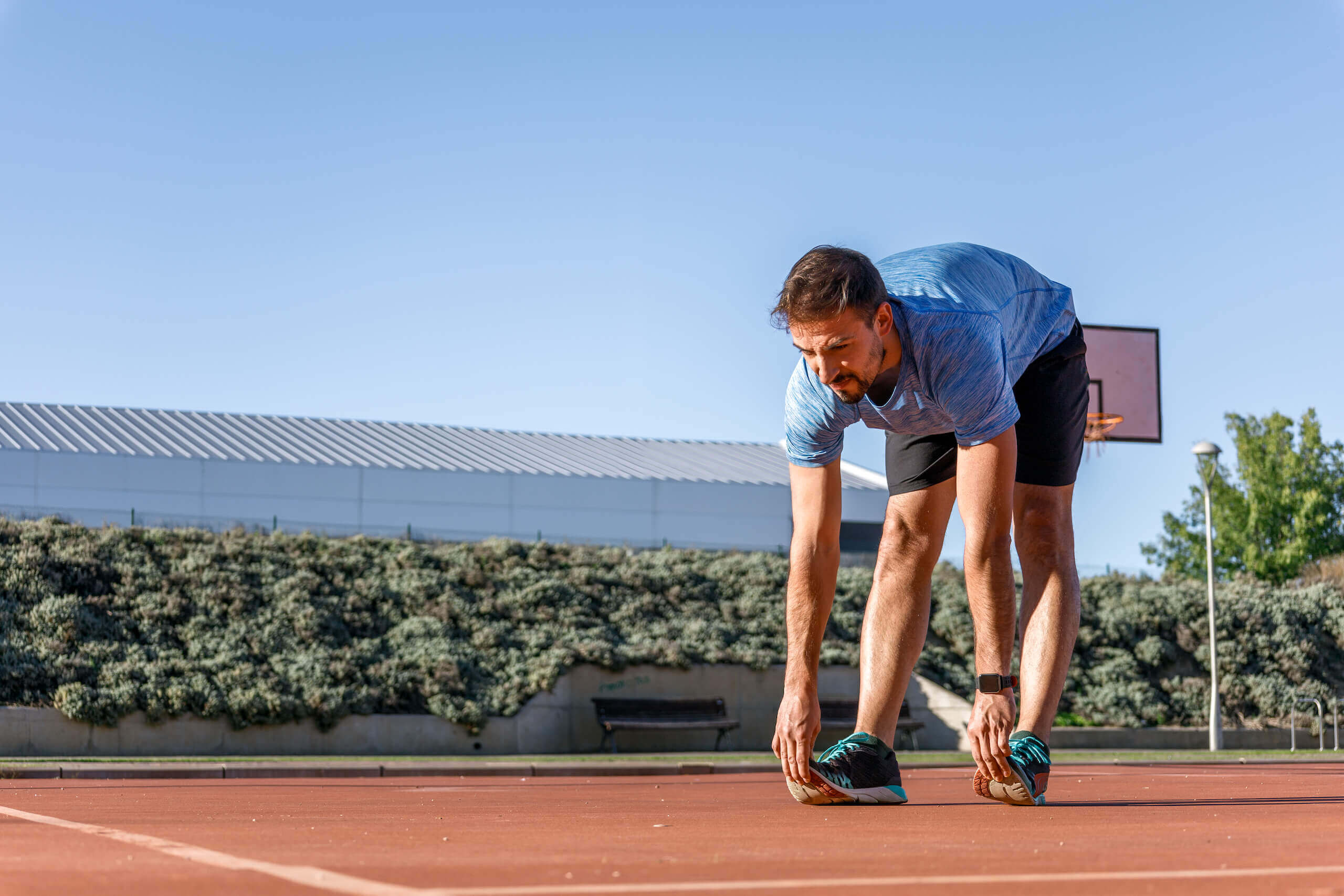
Avoid These Common Mistakes During Injury Rehabilitation. 5 Expert Tips for a Faster Recovery
 Don’t let common mistakes slow down your injury rehabilitation. Learn from experts about the top mistakes to avoid and how to recover faster.
Don’t let common mistakes slow down your injury rehabilitation. Learn from experts about the top mistakes to avoid and how to recover faster.
Usual Mistakes People Make When Rehabilitating Hamstring Strains
Proper injury rehabilitation is extremely important in returning to full, healthy functioning after an injury. Following a proper rehabilitation plan and engaging in the treatment recommended by physical therapist can ensure that a person will return to their fullest potential and avoid further damage or injury. If a proper rehab plan is not followed, numerous potential consequences can occur.
Injuries can range from minor injuries, such as mild muscle strains or sprains, to more serious issues, such as fractures, ligament tears, or joint dislocations. These injuries require specialized care and attention to heal properly and completely.
A physical therapist or any other healthcare professional should be consulted for recommendations on specific exercises aimed at helping the body fully healed from the trauma of the injury while also providing support and preventing any further damage through activities that are appropriate for the affected areas within the given timeframe.
Mistake 1. Not Following a Proper Rehab Plan
Not following a proper rehab plan designed by a physiotherapy expert can significantly prolong recovery and increase the likelihood exacerbating their injury. This is because a comprehensive rehabilitation program typically includes exercises, stretching, nutrition, lifestyle changes and other elements necessary for a successful outcome.
Without adhering to such a plan, an individual is likelier to experience setbacks in their rehabilitation process as muscles, tendons, and ligaments struggle to regain strength.
Furthermore, failing to follow a comprehensive rehab program can cause muscle imbalances, creating pain and discomfort. This occurs when certain muscles become too weak or overly tight while others need to be adequately strengthened or stretched.
A lack of balance between opposing muscles can then strain joints, leading to additional issues such as bursitis or tendonitis. Ignoring any of these warning signs could lead to long-term damage or chronic pain, further extending recovery time and increasing the costs associated with medical intervention.
Mistake 2: Not Listening to Your Body and Physical Therapist
Regarding injuries, athletes and fitness enthusiasts need to take the time to listen to their bodies. Doing so can result in an athlete re-injure themselves, thus slowing the full recovery.
It is important to consider not just the prevention of re-injury, but also other factors that may make injury worse. For instance, wearing the wrong type of running shoes can lead to increased pressure on specific areas of the foot, causing pain or discomfort while running or walking.
This could eventually result in an overuse injuries. Without taking proper precautions and monitoring when engaging in physical activity, an individual may put too much strain on the injury, resulting in more damage that could have been easily avoided.
Step by Step
Even small movements, such as stretching or walking, can be damaging without considering the injury’s severity. Doing too much too soon can cause further tissue damage, increased swelling and pain, increased risk of infection due to torn skin, weakened joints or tendons and raised blood pressure which could create other concerns.
Injuries are caused by various reasons, including overuse or misuse, which means that an individual has either applied too much force to a particular area of their body or has not used proper form while engaging in physical activity.
Depending on the nature of the injury sustained, taking any action before listening to one’s body can be detrimental as it could worsen existing conditions or create new ones altogether.
Mistake 3: Not Seeking Medical Advice
Seeking medical advice is one of the most important things a person can do when dealing with an injury. Proper diagnosis and treatment can help prevent further injury, reduce pain experienced, and allow for a much quicker recovery.
Physical therapists are trained to identify potential risks associated with an injury and will provide the best course of treatment. They also have access to resources such as imaging scans or tests that may aid in identifying any underlying issues or complications that may arise with an injury.
Any movement difficulties must be taken seriously, regardless of how minor they might seem. Even if an individual feels no immediate pain or discomfort following an injury, getting checked out by a doctor as soon as possible is still important.
This ensures that the root cause of the issue is properly identified and treated before it can become more severe, allowing for optimal healing times without further complications. Additionally, physical therapist can advise what exercises (if any) should be avoided during the recovery process, helping to reduce the risk of more harm being done to the affected area.
Mistake 4: Not Being Consistent With Exercises
Inconsistency with exercises can have a serious impact on the recovery process, slowing down progress and lengthening the amount of time needed for fully recover. Consistency is key for achieving a full recovery when recovering from a particular injury.
Muscle tears, dislocations, or sprains, staying consistent with the recommended exercises is necessary for regaining full mobility and flexibility in the affected area.
RMT massage therapy and exercises must be done orderly so the body can gradually build strength and improve its condition. Without consistency, muscles may lose the strength they had previously gained, and any improvement made to date could be reversed.
Furthermore, regular exercise is necessary for muscles, bones, and tissue healing to take longer than necessary due to the inability to stimulate healing at an optimum rate.
On the other hand, regular exercise is vital to ensure that all injured muscles are properly trained and strengthened so that they can better cope with physical activity post-injury.
Mistake 5: Not Being Patient
Patience is key for a full recover after an injury because taking appropriate rest will allow sufficient time for healing while reducing potential damage levels. The body may not have healed completely when trying to bounce back too quickly, leaving it more vulnerable to further damage.
Without patience during physiotherapy, individuals may be tempted to push their limits too soon or return to activities without proper guidance from a healthcare professional.
Doing so can be detrimental and further exacerbate, causing re-injury or long-term issues that could have been avoided with patience and caution. By pushing one’s injury too hard, one risks developing chronic issues, such as plantar fasciitis, which can take months or even years to heal fully.
How to Diagnose and Treat Hamstring Strains
Diagnosing a hamstring strain can be tricky, as it is often difficult to determine the degree of health issues without the help of an MRI or other imaging technology. A doctor will usually start by asking questions about the activity that caused the strain and examining the area for signs of swelling, bruising, or tenderness.
They may also perform various tests such as straight leg raises active resistive exercises, and passive range of motion to assess flexibility and strength in the muscles.
MRI or X-ray
In addition to a physical examination, doctors may order an MRI or X-ray further to evaluate any structural damage to the muscles and tendons. An ultrasound can also check for blood clots in the affected area.
After diagnosing a hamstring strain, treatment typically involves rest, ice, compression, and elevation (RICE) and non-steroidal anti-inflammatory drugs (NSAIDs) such as naproxen, sodium or ibuprofen.
Physical Therapy
Physical therapy is often recommended after a few days of initial rest. This can involve stretching exercises to increase flexibility without causing more damage, strengthening exercises to strengthen both hamstrings, and balance training exercises using foam rollers or stability balls to improve coordination and agility.
Additionally, special taping techniques like kinesiology tape have been found helpful in reducing pain while allowing athletes to continue their activities with a full range of motion.
Expert Tip
Injury rehabilitation is a complicated process that requires patience and consistency for optimal results. It may seem like exercising with a right weight, having good posture, avoiding stress, monitoring heart rate, or maintaining your fitness level are not a big deal, but in reality, all of these factors play an important role when it comes to recovering from an injury.
What is Really Important?
- Listening to the body and taking precautions
- Avoiding the wrong type of running shoes
- Doing too much too soon
- Not seeking medical advice
- Inconsistency with exercises
- Increasing blood flow in injured areas during sports activities
To ensure you’re on the path toward full recovery and happiness in life, it’s essential that you seek physical therapists advice from an expert who understands your individual needs. With these tips in mind, you’ll be able to avoid most common mistakes during injury rehab and get back on track faster than ever before!







